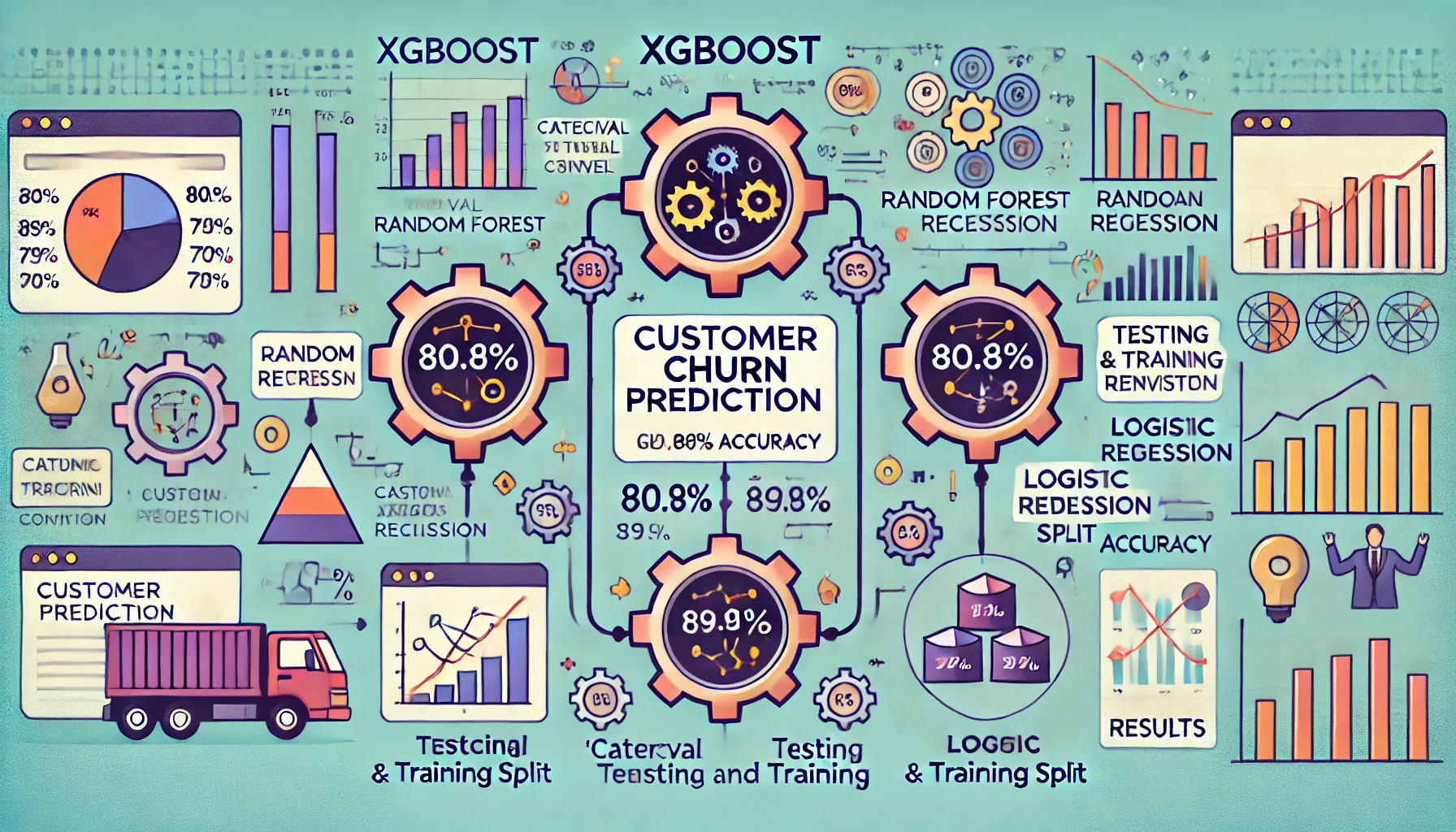The Quest to Keep Customers: Predicting Churn with Machine Learning
in the competitive business world, predicting when a customer might leave—called churn—can help companies take action to keep them. This project focused on using machine learning to predict customer churn based on a dataset containing 7,043 customer records. The data included valuable insights like demographics, service usage, and past customer behavior. By accurately predicting churn, businesses can intervene and retain their customers, preventing losses.
The Approach: Three Machine Learning Algorithms
To achieve our goal, we compared the performance of three popular machine learning algorithms:
- XGBoost (Extreme Gradient Boosting)
- Random Forest
- Logistic Regression
Each algorithm brought its own strengths to the table, and we wanted to see which one performed best in predicting whether a customer would stay or leave.
Prepping the Data for Success
Before we could dive into modeling, we needed to prepare the dataset. Here’s how we tackled it:
Categorical to Numerical Conversion: Since machine learning models work best with numerical data, we converted all the categorical variables (like gender, type of service) into numbers. For example, "Male" might become 0 and "Female" 1.
Simplification: We also dropped certain columns that weren’t necessary for the prediction process, focusing on the most important features for simplicity and clarity.
Testing and Training: In each run, we randomly selected 100 rows of data as our test set, leaving the rest for training the model. This process was repeated 10 times, each time with a different set of 100 test rows. The final accuracy was reported as the average of these 10 test runs, ensuring a fair and reliable evaluation.
The Algorithms Explained
XGBoost:
XGBoost is like a precision tool that builds multiple decision trees one after another. Each tree corrects the mistakes of the previous one, creating a model that learns from its own errors.
Random Forest:
Random Forest is a collection of many decision trees that work together. Each tree looks at a random subset of the data and features, and the final prediction is made by combining all the trees’ results.
Logistic Regression:
How it works: Logistic Regression is simple but powerful for binary classification tasks like churn (yes or no). It models the probability of churn based on a linear relationship between input features (like age, service type) and the likelihood of leaving.

Evaluating the Results: Who Won the Churn Prediction Race?
After running the models, we found that Logistic Regression delivered the highest accuracy at 80.8%. This was followed closely by XGBoost at 79.9% and Random Forest at 79.3%. The results might seem surprising—typically, XGBoost would outperform both models, but in this case, the straightforward nature of the data favored Logistic Regression. The binary nature of churn (yes or no) made Logistic Regression the most effective, simple, and reliable choice for this problem.
Areas for Improvement: Where to Go Next
Though the results were promising, there’s always room to improve. Here are a few ideas for future iterations:
The possibilities don’t end there. Imagine a browser extension that gathers user data automatically and refines predictions in real time. Or consider diving even deeper into granular data—like the specific types of products users prefer in e-commerce, not just price ranges. These additional layers could bring an even sharper edge to our predictions.
More Data and Features: Increasing the number of records in the dataset and adding more features, like additional behavioral or demographic attributes, could enhance the model’s ability to capture customer behavior patterns.
Categorical Grouping: Some columns divided customers into categories (e.g., five different customer types). Instead of dropping these columns, we could map these categories to numerical values and retain them in the model, allowing it to learn from more varied customer groups.
Enhanced Feature Engineering: We could explore more advanced techniques to extract hidden patterns from the existing data, improving the accuracy of the models.
Conclusion: What We Learned
Through this project, we learned that Logistic Regression was the most effective tool for predicting customer churn, thanks to its simplicity and the nature of the binary target variable. While XGBoost and Random Forest performed similarly, their strengths are often more apparent in more complex datasets. This project offers a solid foundation, but with more data and fine-tuning, we could further boost accuracy and uncover even deeper insights into customer behavior